Stuck in a stick: How do twig-nesting ants avoid heat stress?
In the study “Behavioral response to heat stress of twig‑nesting canopy ants” recently published in Oecologia, Jelena Bujan and Stephen Yanoviak tested the ability of tropical twig-nesting ants to behaviorally thermoregulate. Global warming and thus heat stress is anticipated to increase and may impact brood and workers inside twig nests in the canopy, which is thermally variable. The authors examined nest choice and absconding behavior (nest evacuation behavior) in response to heat stress in four common twig-nesting ant genera. In contrast to Camponotus and Crematogaster, which nest in all forest strata, genera that almost exclusively nest in the canopy occupy smaller cavities. In heating experiments using both natural and artificial nests, Crematogaster ants fled at the lowest temperatures. Cephalotes workers were less likely to flee from their nests. This highlights that different genera apply different strategies and sensitivities to heat stress. Here, Jelena Bujan highlights the main points and shares some amazing pictures and videos of the work behind the study.
A Photoblog contribution by Jelena Bujan
Edited by: Billu Das, Hoon Kang, Patrick Krapf

The tropical forest canopy is hotter and drier than the understory below. Yet we know little of the local climatic conditions that small ectotherms experience in the canopy, and their adaptations to deal with a harsher climate than their understory counterparts. Given that behavioral responses are often the first line of defense against stressors, we tested the thermoregulatory behavior of tropical twig nesting ants.
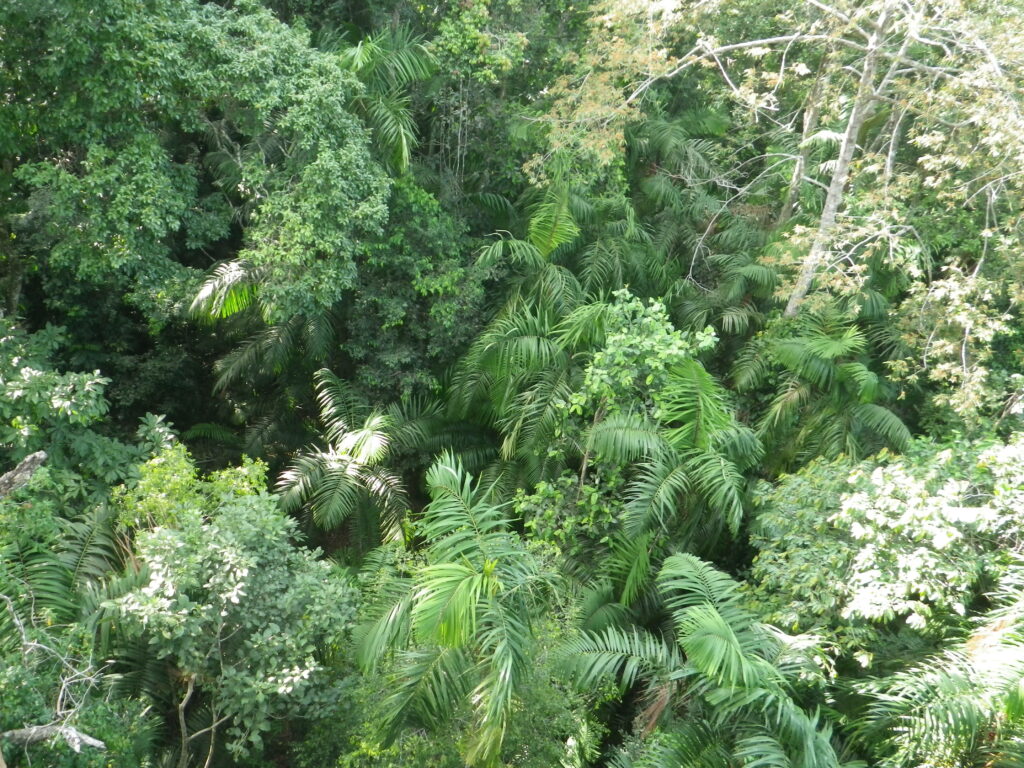
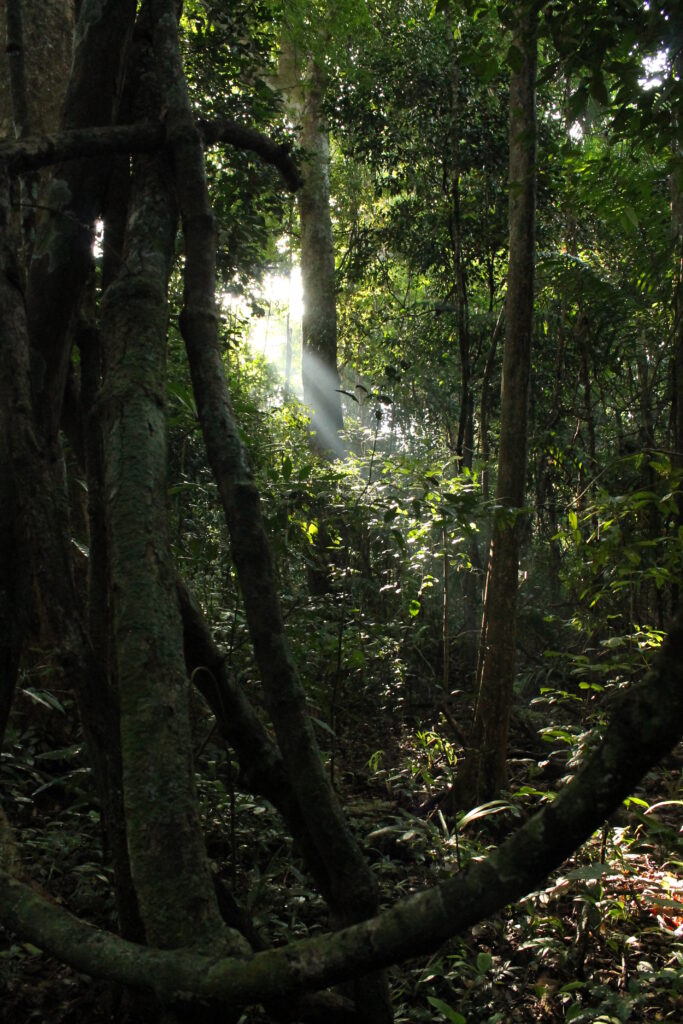
We conducted our study at Barro Colorado Island (BCI) in Panama, which is probably the best-explored piece of tropical forest in the world. While we know a lot about the processes in the understory, the forest canopy is still underexplored despite the incredible arthropod diversity it contains.
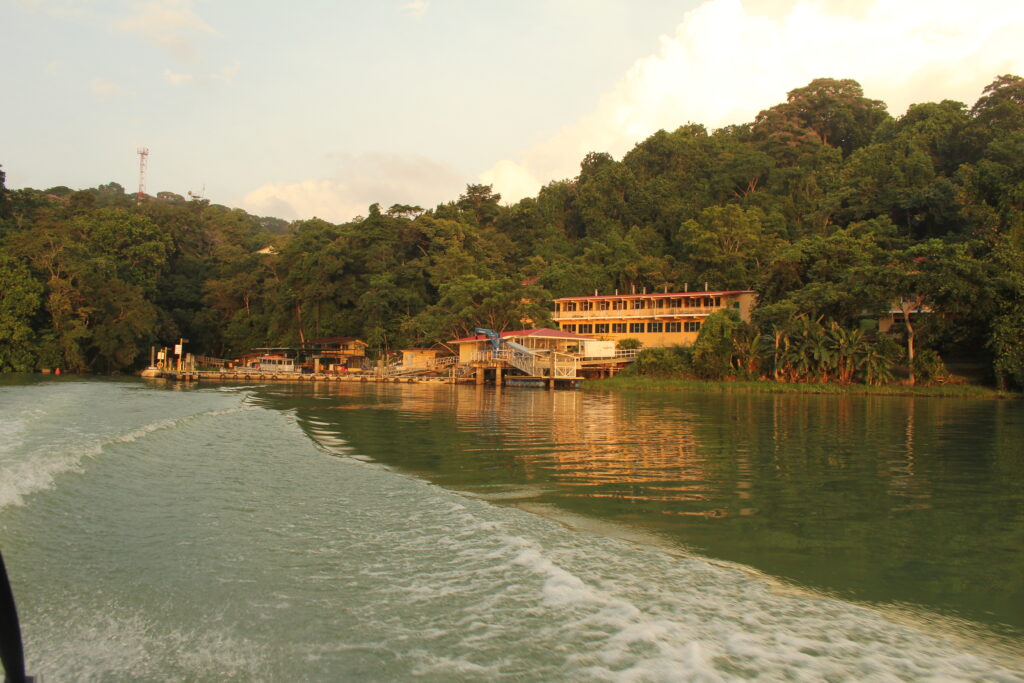
Tropical tree crowns can get really hot during the day – here is a thermal image of a branch of Ceiba pentandra taken at 10:00 AM, with warm patches that exceed 40 °C.

To collect twig nesting ants, we accessed the canopy using the single rope climbing technique. We brought back twig nests of 4 common canopy nesting genera (Camponotus, Cephalotes, Crematogaster, and Pseudomyrmex) to the lab and tested ants’ ability to withstand nest warming.
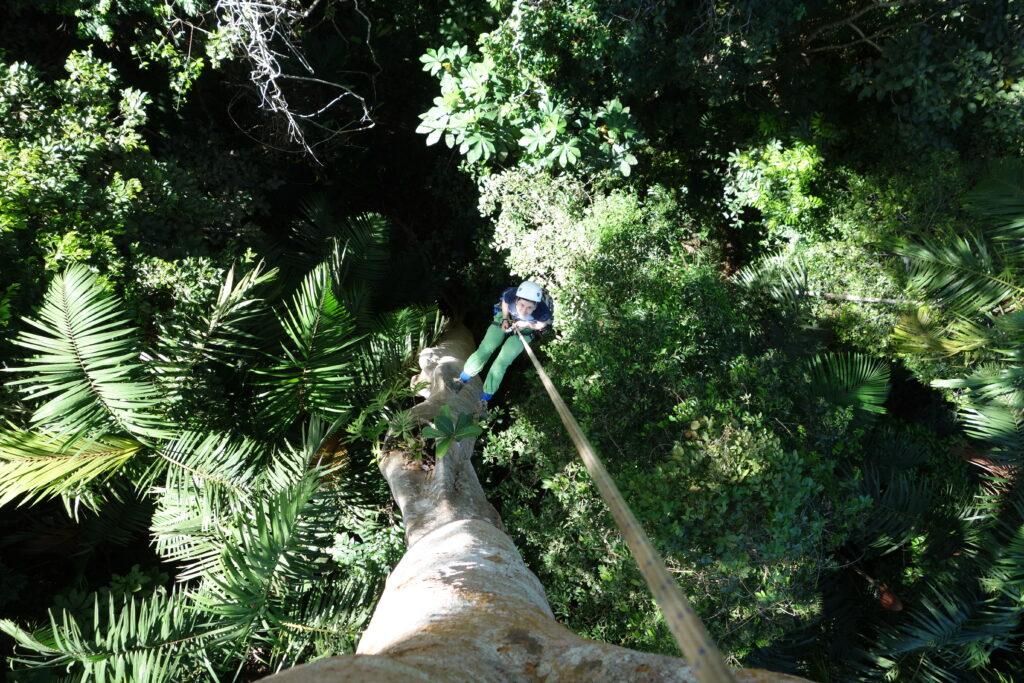
During our canopy collections we were often joined by friends that supervised our collections.
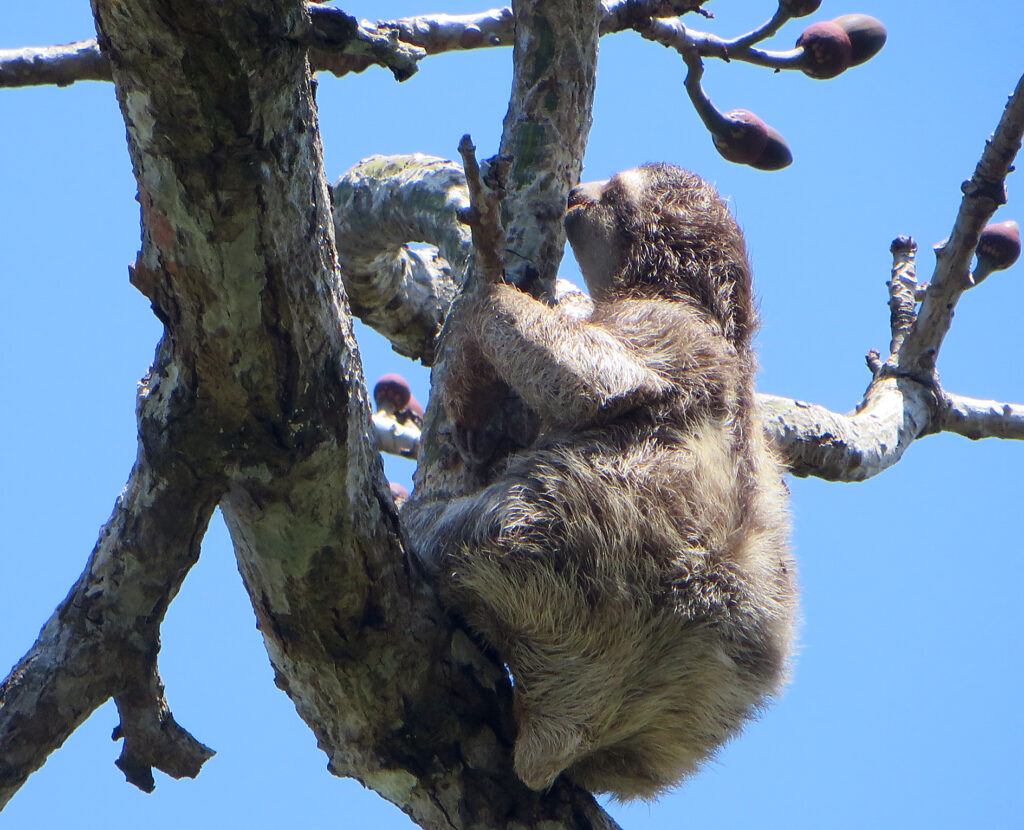
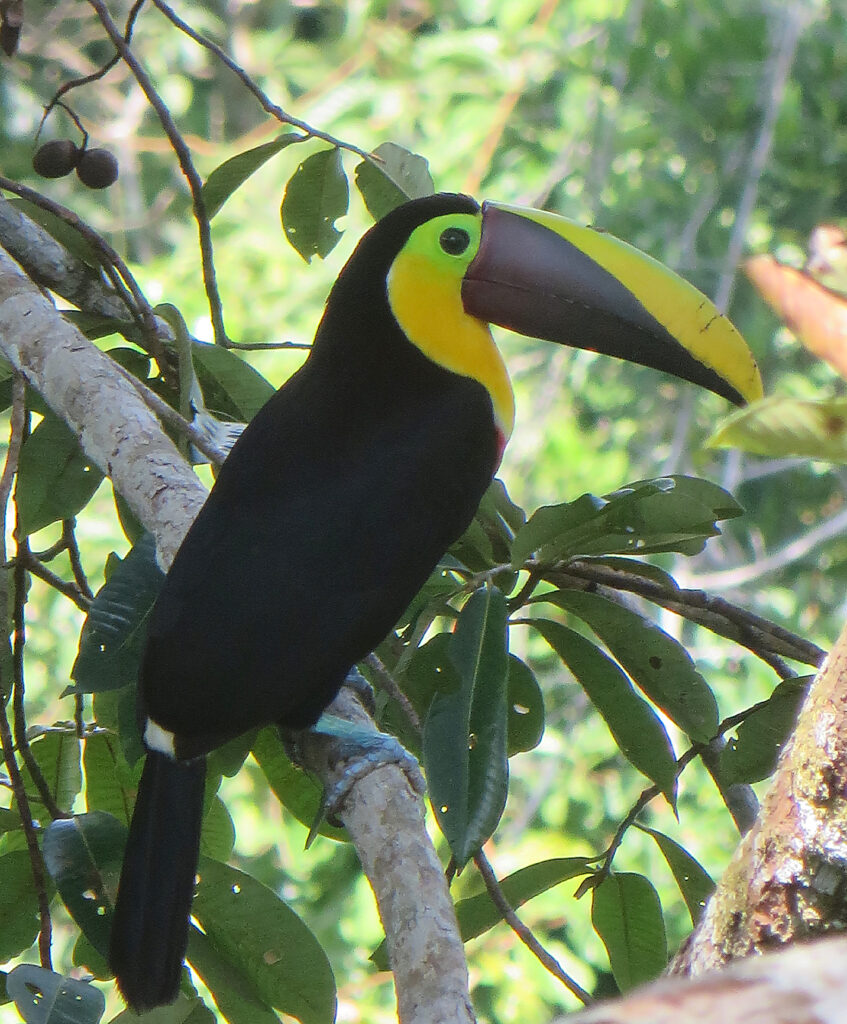
Sometimes we used a boat to collect ant nests from tree crowns overhanging Gatun Lake.
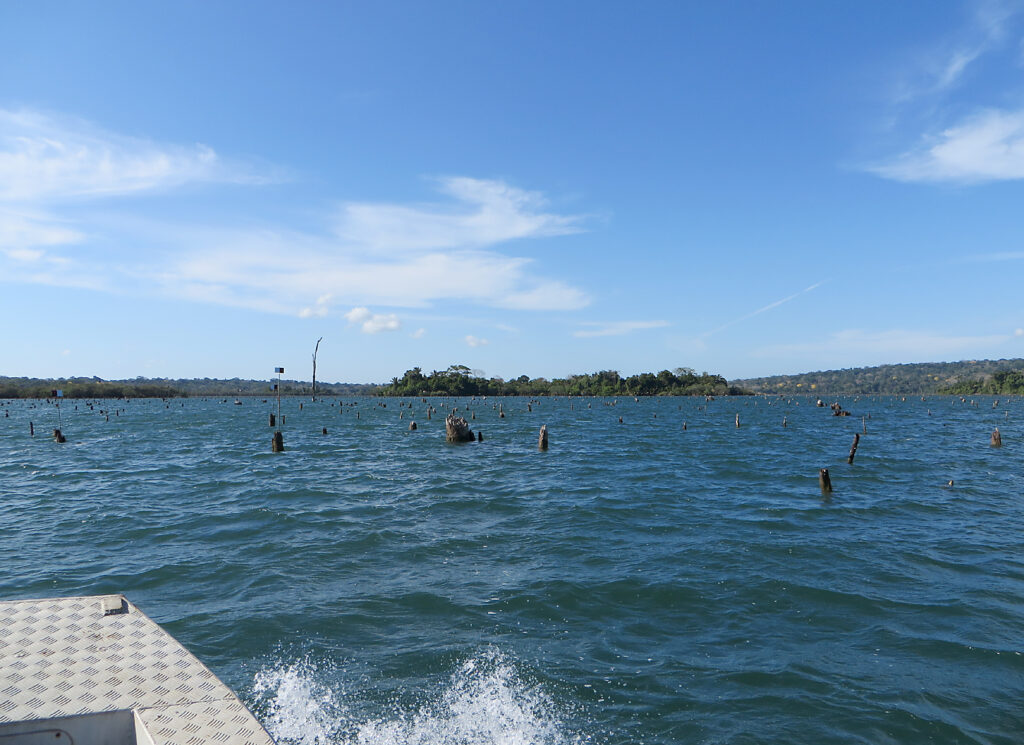
Twig nesting ants cannot quickly manipulate temperatures inside the nest by changing the size of the nest or the size of the nest openings, as mound nesters do. Once a twig nest starts heating up, the nesting ants have two options: 1) evacuate the nest; 2) withstand the heat.
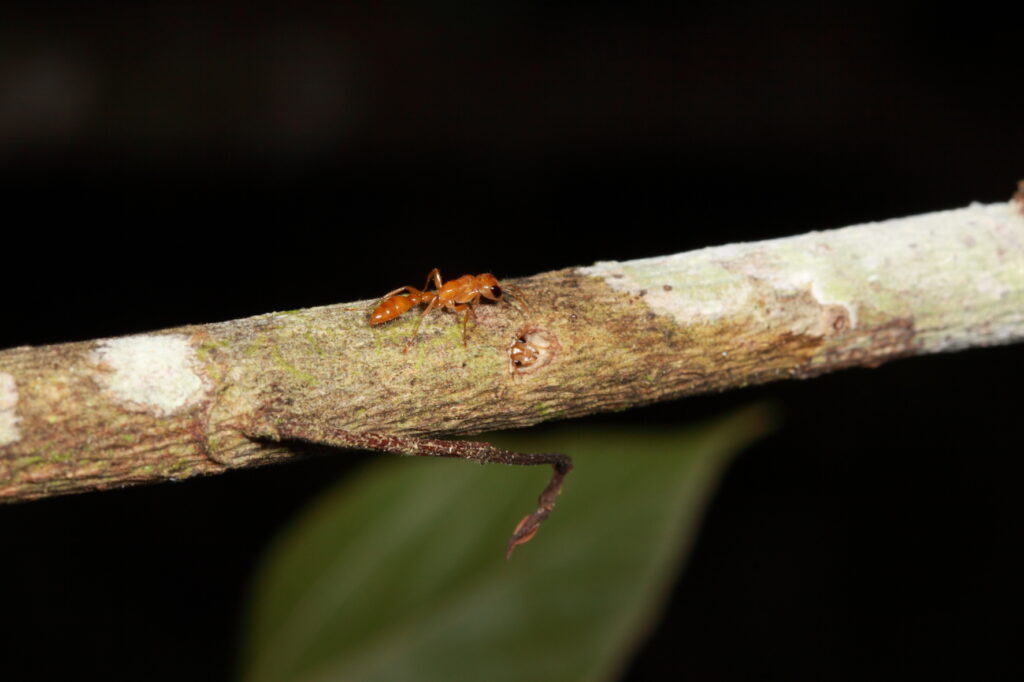
We found that canopy specialist genera Pseudomyrmex and Cephalotes —which nest almost exclusively in the canopy—occupy twigs with smaller cavities. These genera are more consistent in their nest selection, usually choosing nests of similar sizes. Cephalotes was also least likely to evacuate their nests in response to heating.
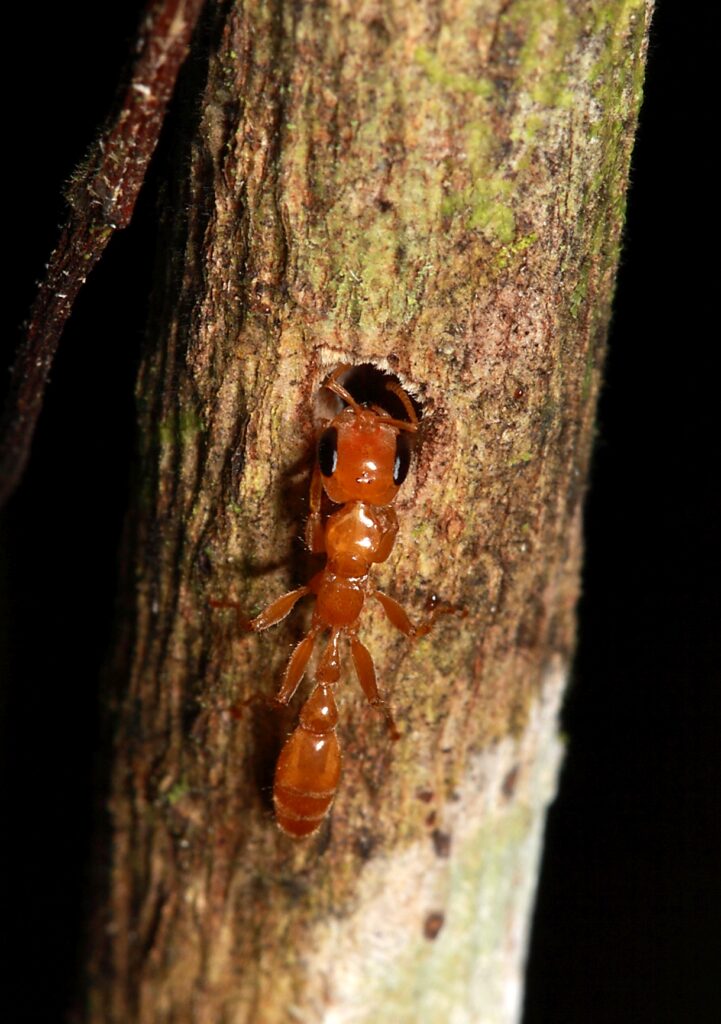
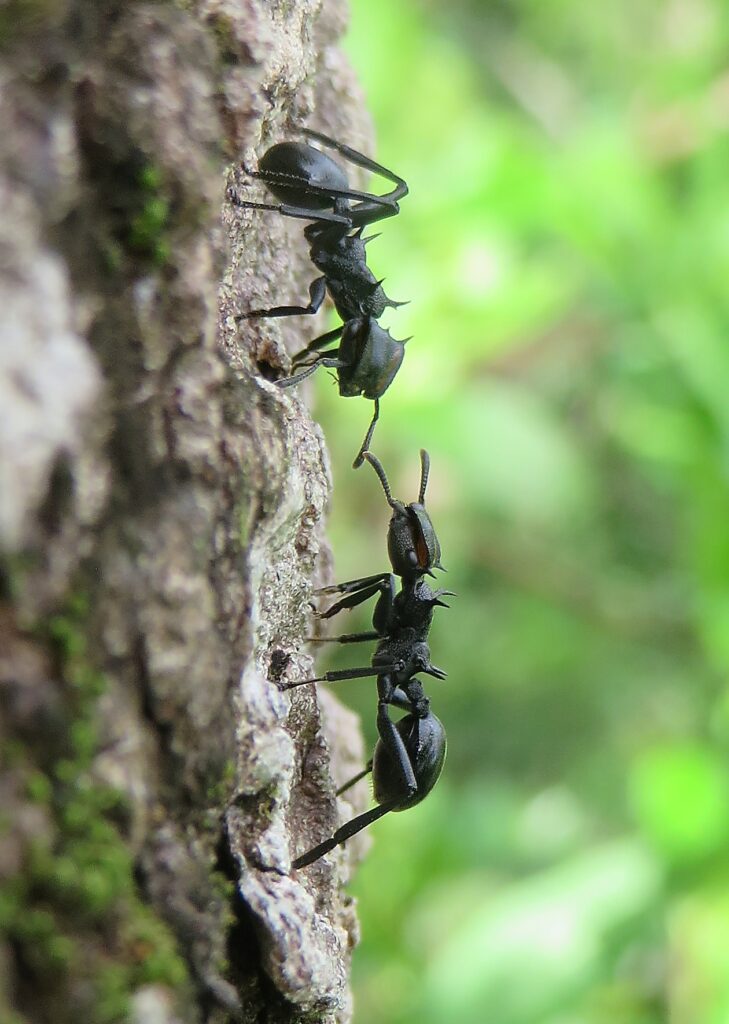
Camponotus and Crematogaster were more likely to remove their brood while absconding their nests. Here is a Camponotus sp. demonstrating brood evacuation behavior. This behavior continued until all the brood was evacuated from the nest.
Crematogaster spp. evacuated their nests at the lowest temperature of all studied genera (42°C). The workers displayed gaster flagging behavior while absconding. This behavior is a defense response generally displayed in response to a threat.
Nests of Camponotus and Crematogaster are often raided by army ants, and during these attacks ants evacuate their nests with brood. This response to attack might be one of the reasons why, when exposed to heat stress, these two genera abandon their nests carrying their brood.
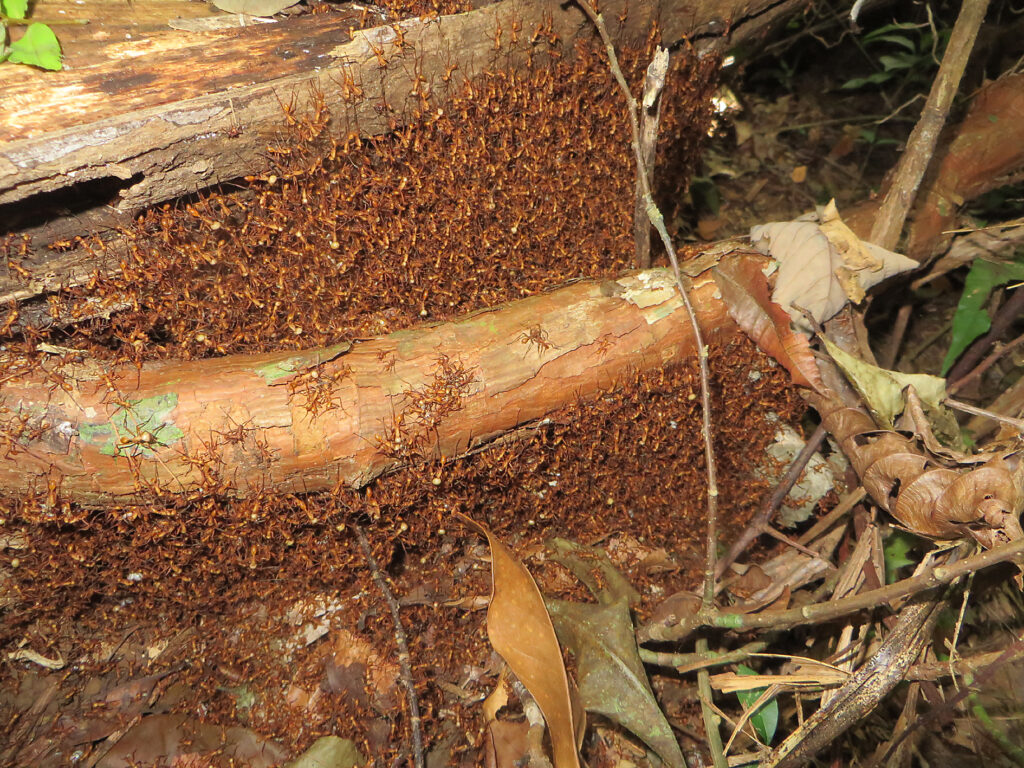
As temperatures and the frequencies of drought increase, canopy ants face a climatically challenging environment. We found that avoidance of heat stress is species-specific. Some ants abscond to avoid heat stress, and often carry their brood with them, while others prefer to stay inside of the nest. We have yet to find out how costly behavioral thermoregulation can be. Predation risk might be an additional factor that shapes the species-specific behavioral responses of canopy ants to heat stress.
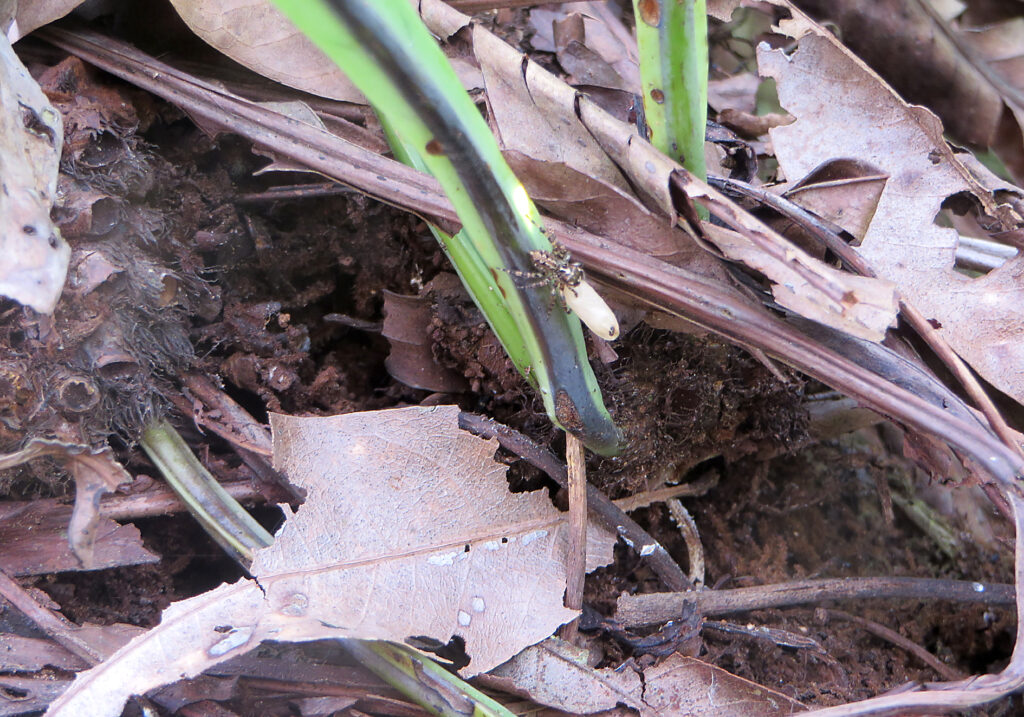


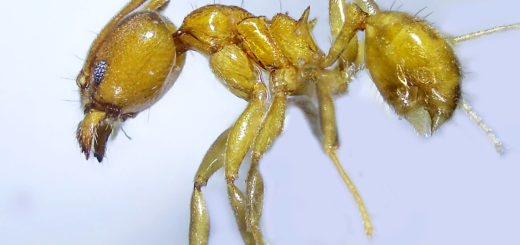
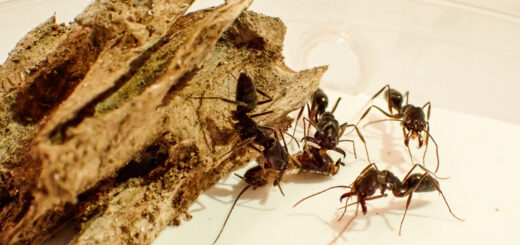
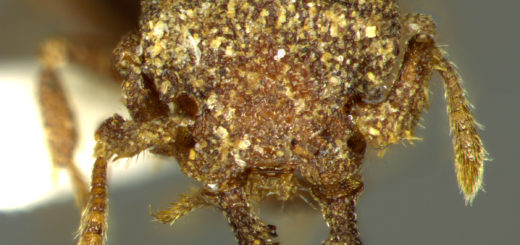
Recent Comments